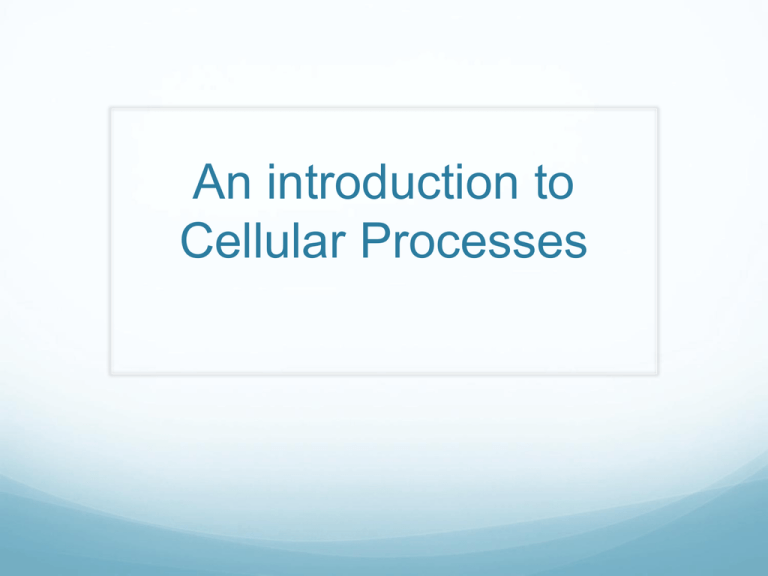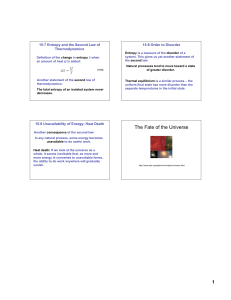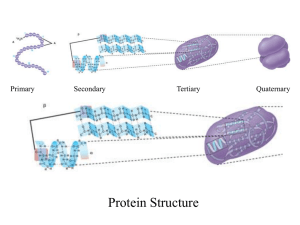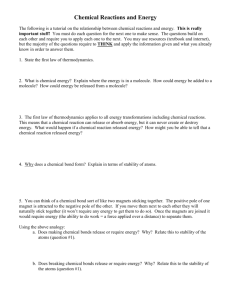An introduction to Cellular Processes
advertisement

An introduction to Cellular Processes Learning Objectives SWBAT: Explain why all biological systems require constant energy input to maintain organization, grow, and reproduce. SWBAT: Predict how changes in free energy availability affect organisms, populations, and ecosystems. Living systems require free energy and matter to . . . Maintain order Grow Reproduce Organisms use various strategies to . . . Capture Use Store . . . FREE ENERGY. What is free energy? Free energy = available energy Let’s talk about energy What is it? What is it? Energy – the capacity to do work; the capacity to cause change Forms of energy Kinetic energy= the energy of motion Thermal energy = the kinetic energy of randomly moving atoms or molecules Potential energy= the capacity to cause change as a result of an object’s location or arrangement Chemical energy = a form of potential energy available for release in chemical reactions; stored in chemical bonds Thermodynamics The study of energy transformations in a collection of matter Laws of Thermodynamics 1st Law: Energy can be neither created nor destroyed. It can, however, be transformed or transferred. 2nd Law: Every energy transfer or transformation results in increasing disorder within the universe. Entropy = a measure of the disorder or randomness. In almost every chemical reaction some energy is converted to thermal energy and released as heat. Heat is a very disordered form of energy. Given that: 1. Life requires a highly ordered system 2. Cellular processes often consist of a series of chemical reactions that release heat, and therefore energy, at each step. Does life violate the second law of thermodynamics? In living organisms, increased disorder and entropy are offset by biological processes that maintain or increase order. One way to do this is to couple cellular reactions that increase entropy (=decrease free energy,= exergonic) with those that decrease entropy (=increase free energy, = endergonic) Put another way. . . Combine energetically favorable, spontaneous reactions (those in which the products have less available energy than the reactants) with those that have an increase in the free energy in their products vs. their reactants One such reaction that is energetically favorable, spontaneous is the reaction that converts ATP ADP Energy input must exceed (or at least match) energy lost to entropy. Where does that energy come from in living organisms? If acquired free (available) energy > required free energy (expendable) energy storage or growth. If acquired free (available) energy < required free energy (expendable) loss of mass and ultimately death of the individual, population, and/or ecosystem. The energy related, coupled pathways in biological systems are sequential and may be entered at multiple points in the pathway. Examples: Krebs Cycle Glycolysis Calvin Cycle Fermentation Learning Objectives SWBAT: Explain why all biological systems require constant energy input to maintain organization, grow, and reproduce. SWBAT: Predict how changes in free energy availability affect organisms, populations, and ecosystems.








